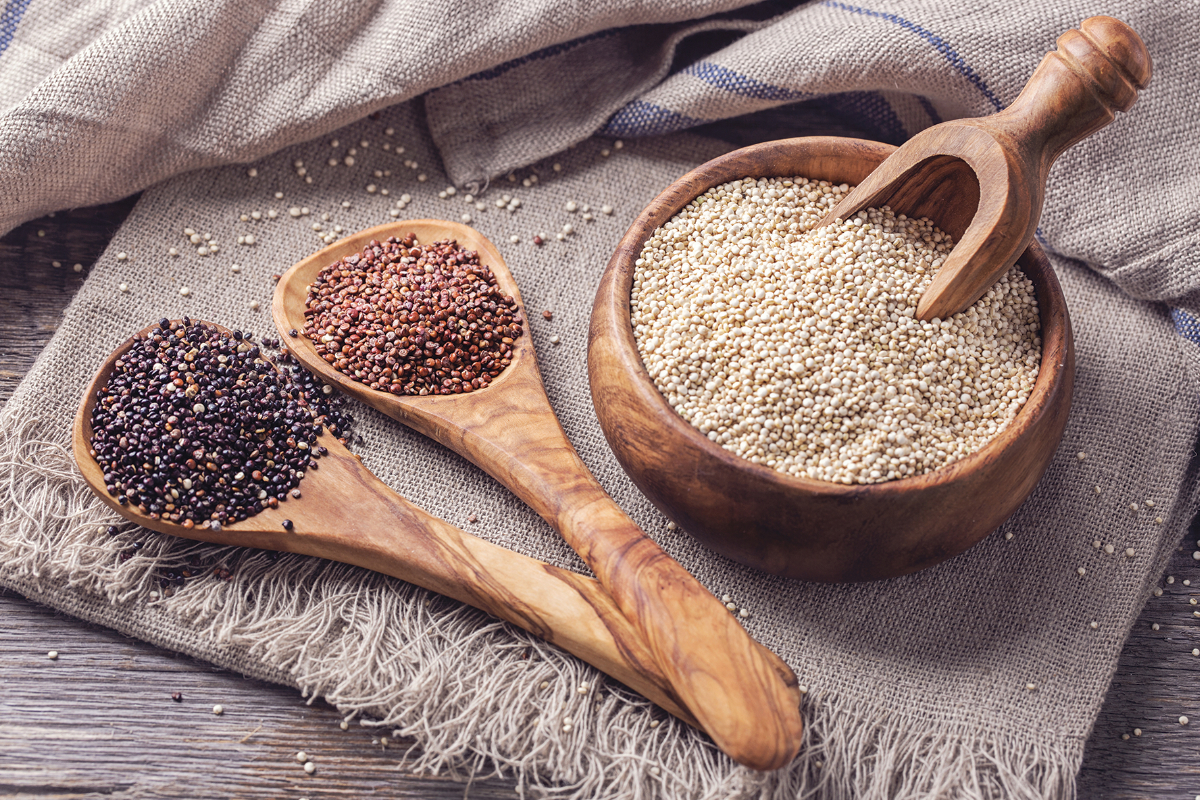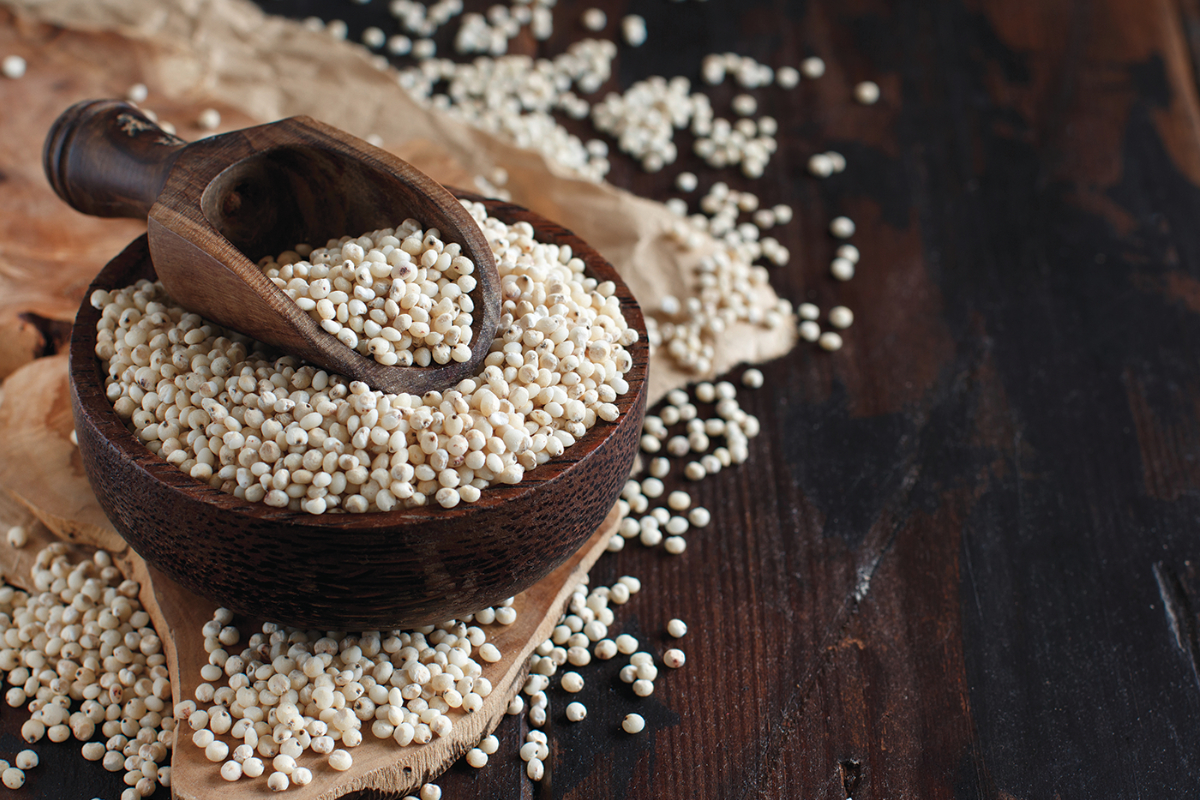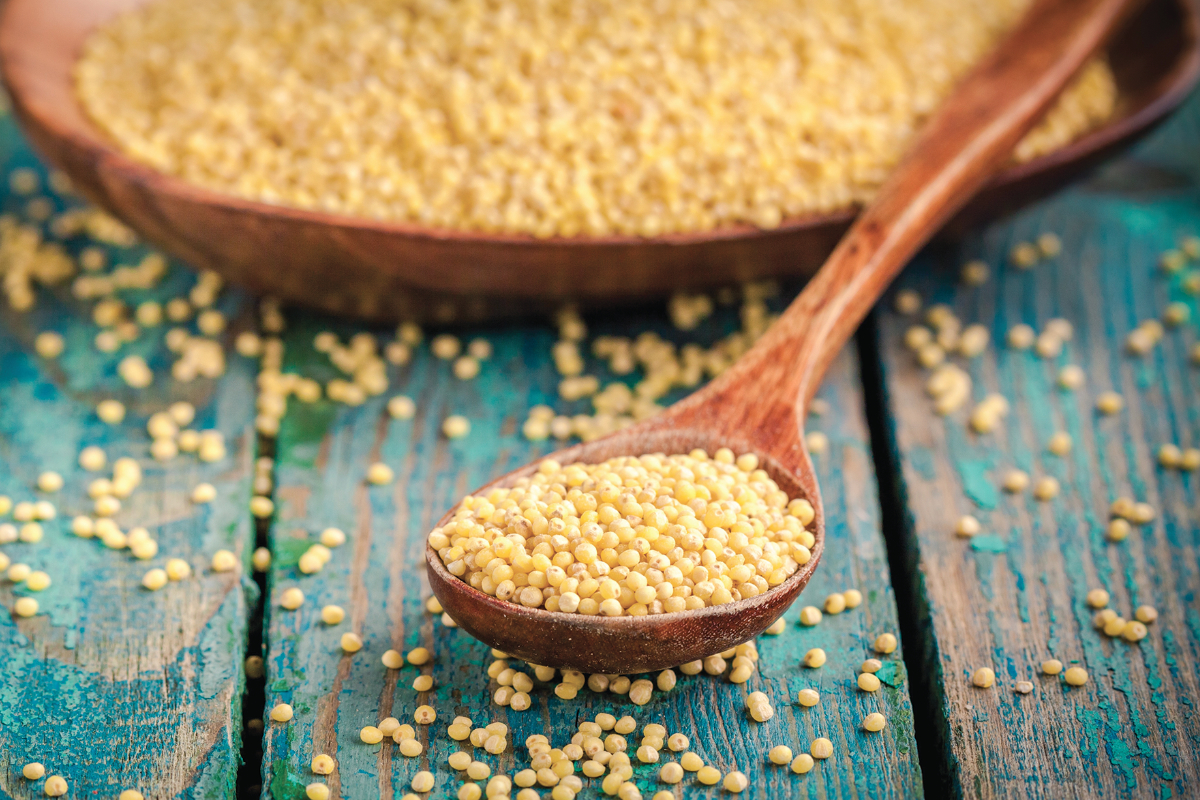KANSAS CITY — The size and type of a whole grain may determine whether it fits a specific on-trend category. A finely milled grain may allow for its use in beverages. Whole grain wheat will not work in gluten-free applications, but several ancient grains do not contain gluten and provide protein boosts as well.
“Both bakers and consumers have embraced the use of whole grains in their baked foods,” said Brent Galasso, regional sales manager for Brolite, Bartlett, Ill. “Whole grains add variety in texture and flavor. They’re appearing in sweet goods, crackers, flatbreads, rolls and in artisan products. Because the particulate size of the whole grain can be adjusted from the whole grain itself to a whole grain flour, they can be used in so many ways.”
Significant consumer recognition of whole grains has existed for more than a decade. More than 80% of respondents said they perceived whole grains as healthy in the International Food Information Council Foundation’s 2018 Food and Health Survey. The Whole Grain Stamp as of July appeared on over 12,000 products in 58 countries, according to the Whole Grains Council, Boston.
Still, whole grain consumption could increase. The Dietary Guidelines for Americans 2015-2020 recommends whole grains make up half of people’s grain intake, but the reality is far short of that level.
Whole grains in beverages might help.
 Glanbia Nutritionals, Fitchburg, Wis., this year introduced BevGrad Oats GF and BevGrad Quinoa. Formulators may use both ingredients to help qualify for the Whole Grain Stamp. The dispersibility and smooth mouthfeel of the ingredients allows for their use in powdered drink mixes, according to Glanbia Nutritionals.
Glanbia Nutritionals, Fitchburg, Wis., this year introduced BevGrad Oats GF and BevGrad Quinoa. Formulators may use both ingredients to help qualify for the Whole Grain Stamp. The dispersibility and smooth mouthfeel of the ingredients allows for their use in powdered drink mixes, according to Glanbia Nutritionals.
“BevGrad solutions are super finely milled seeds and grains that result in superior taste, a smoother, non-gritty mouthfeel, as well as a clean label,” said Charles Steenwyk, global product manager — grains for Glanbia Nutrition. “BevGrad solutions by design make it easier to incorporate seeds and whole grains into beverages and products consumers are seeking.”
Elmhurst Milked, L.L.C., Elma, N.Y., packs 20 grams of whole grain into its Milked Brown Rice milk alternative drink. The company starts with brown rice and then uses its HydroRelease method to convert the whole grain — bran, germ and endosperm — to a creamy emulsion.
“This is what gives Milked Brown Rice its lush texture and makes drinking a common grain a wonderfully uncommon experience,” Elmhurst said.
The product qualifies for the Whole Grain Stamp. Elmhurst’s “cold-milking” production process maintains all parts of the grain and eliminates the need for stabilizers, emulsifiers or gums, according to the Whole Grains Council.
Grains will react differently, Mr. Galasso said.

“Some will absorb water,” he said. “Some will cut the gluten structure. Some will aid the gluten development. Some add color, and some alter the eating qualities.”
In bread, a larger seed or grain may benefit visual appearance, texture and eye appeal, he said. In flatbreads, smaller particles would not ruin the texture or structure.
Whole wheat flour continues to see more use in new products, said Kirk Stehr, vice-president of sales for Grain Craft, Chattanooga, Tenn.
“These could include bran flour, hard wheat flour, spring wheat whole wheat, hard white whole wheat and soft white whole wheat,” he said. “We are particularly enthusiastic about the use of white wheats, which are easier to incorporate in formulas than some of the other whole wheats. White wheat has also seen as strong growth in breakfast and snack segments when the objective is to create a beneficial combination of protein and whole grains.”
Franz Bakery is featuring Grain Craft as a supplier for its Naked Bread line, which includes a honey wheat variety with whole wheat flour as the first item on the ingredient list. The Naked Bread line uses “simple and essential” ingredients, according to Franz Bakery.
“We have many longtime relationships with our customers and are excited that Franz offered a completely transparent look into their new bread line,” Mr. Stehr said. “We would embrace the opportunity to partner with other bakeries in telling the story of farm to flour. However, at this time we are not involved in any other supplier features. We do see the mindset of today’s consumers wanting to know more than basic product information, which includes a glimpse into ingredient sourcing and being able to connect and learn the stories of the key ingredient suppliers.”
 Incorporating whole grains into gluten-free applications means avoiding the use of wheat and other gluten-containing grains.
Incorporating whole grains into gluten-free applications means avoiding the use of wheat and other gluten-containing grains.
Quinoa and other ancient grains may offer higher protein levels than other gluten-free sources. Quinoa, at 14% protein, may have a higher content than wheat, which averages about 12% protein. Two other ancient grains, millet and sorghum, are about 11%, which ranks ahead of corn at 9% and rice and 8%.
“According to The Hartman Group, 20% of consumers avoid gluten, making gluten-free a very marketable on-pack claim,” said Mark Stavro, director of marketing for Bunge North America, St. Louis. “Alternatively, consumers are seeking to add protein and fiber to their diets. Ancient grains are a great way to introduce gluten-free sources of protein and fiber into a wide range of foods and beverages.”
Donna Reiser, marketing communications manager for Bay State Milling Co., Quincy, Mass., added, “Gluten-free products of the recent past relied heavily on less nutritious, bland-tasting ingredients. Ancient grains in whole, flour, flaked, puffed and blended forms are delivering visually and texturally interesting and nutritiously enhanced versions of consumers’ favorite grain-based foods from breads, rolls, tortillas and pizza to pasta, cookies, muffins, bars and snacks. Where gluten-free once meant a limited selection, it now encompasses the expanse of grain-based foods.”




